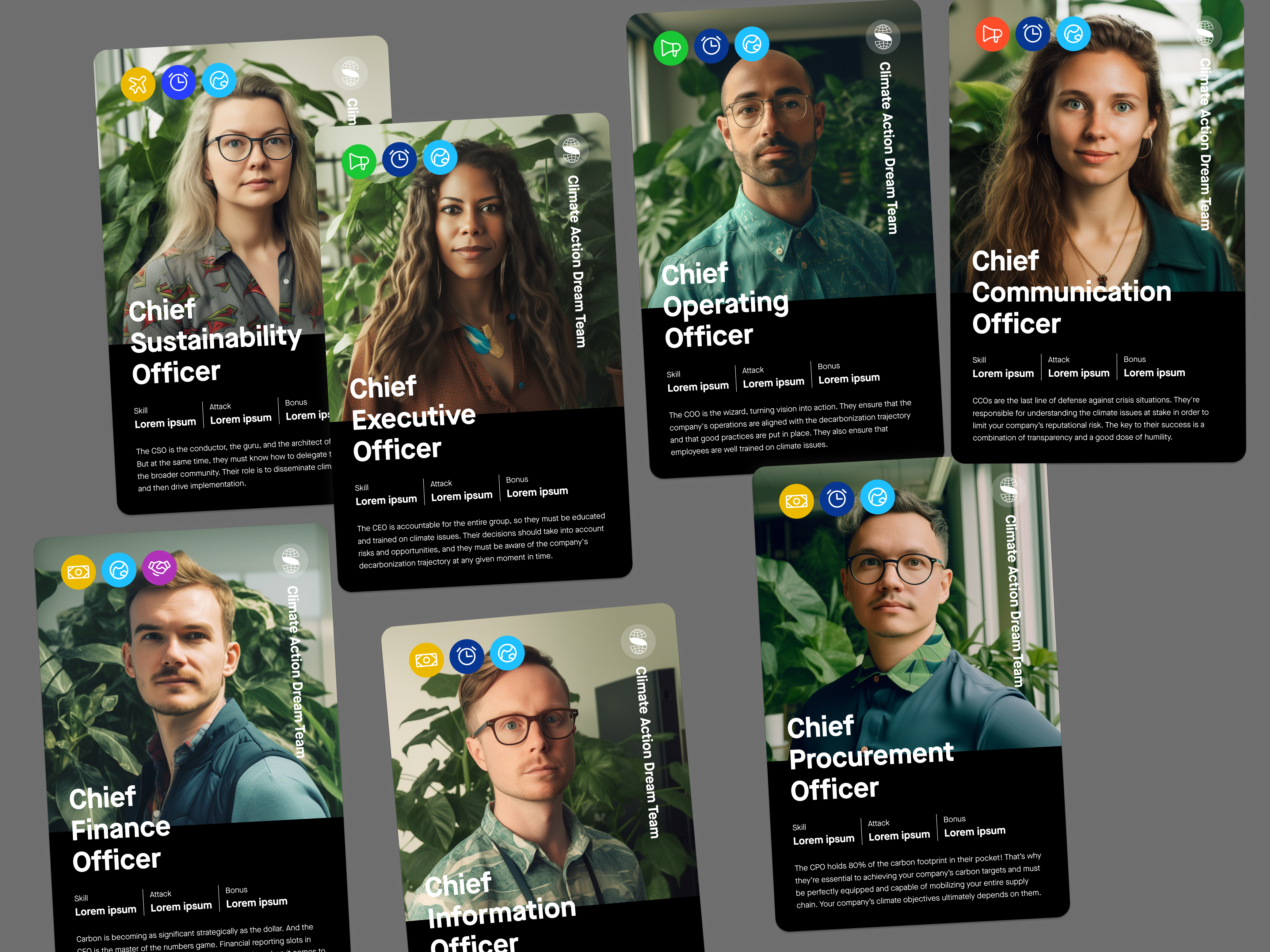Introducing the Climate-Suite


- Author
- Renaud BettinVP Climate Action & Sales Enablement
- Category
- Insight
- Topics
- ESG
- Published
- 28 April 2023
Collaboration is crucial to hitting your climate goals. Every team has to chip in. And to guide the crew, you need leaders. Time to build out your Climate Suite.
Companies are recognizing the need to take action on climate change and are looking to build an impactful team of leaders who can drive progress. Read on to learn how to build your Climate Suite, from identifying key team members, to establishing clear goals and metrics, and creating a culture of collaboration and accountability.
How to build your Climate Suite
Every member has an important role to play in decarbonising your business and building a Forever Company. The key roles include:
Key roles include:
The Chief Sustainability Officer (CSO): The CSO is the conductor, the guru, and the architect of climate action. But at the same time, they must know how to delegate tasks, and lead the broader community. Their role is to disseminate climate knowledge and then drive implementation.
The Chief Executive Officer (CEO): The CEO is accountable for the entire group, so they must be educated and trained on climate issues. Their decisions should take into account risks and opportunities, and they must be aware of the company's decarbonization trajectory at any given moment in time.
The Chief Operating Officer (COO): The COO is the wizard, turning vision into action. They ensure that the company's operations are aligned with the decarbonization trajectory and that good practices are put in place. They also ensure that employees are well trained on climate issues.
The Chief Finance Officer (CFO): If carbon is to become as significant strategically to companies as the dollar, then the CFO becomes the master of the game. They are experienced in financial reporting, which means that they’re also the right person for extra financial reporting. They’re a key decision maker when it comes to investing in decarbonization, and the MAC Curve is their best friend.
The Chief Information Officer (CIO): In the enterprise resource planning (ERP) era, the CIO is the master of data, the heart of the matrix. Their knowledge of IT processes and technologies is a weapon of mass action. They ensure that the company is on track, according to its trajectory.
The Chief Procurement Officer (CPO): The CPO holds 80% of the carbon footprint in their pocket! That’s why they’re essential to achieving your company’s carbon targets and must be perfectly equipped and capable of mobilizing your entire supply chain. Your company’s achievement of its climate objectives ultimately depends on them.
The Chief Communication Officer (CCO): CCOs are the last line of defense against crisis situations. They're responsible for understanding the climate issues at stake in order to limit your company’s reputational risk. The key to their success is a combination of transparency and a good dose of humility.

Encouraging action
The Climate Suite has a significant role to play in driving climate action within your company, because each member is an expert in their own area of action. Below are some ways you can encourage your fellow team members to get involved and drive progress:
Communicate the business case: Help your colleagues understand the risks and opportunities associated with climate change and why it's important for the company to take action. Make the case for sustainability in terms of the bottom line, highlighting the potential cost savings, increased competitiveness, and improved brand reputation that can result from taking action.
Empower others: Give your colleagues the tools, resources, and support they need to take action on climate change. This could include providing training on sustainability best practices, setting up a green team or task force, or allocating budget and resources to sustainability initiatives.
Set clear goals and metrics: Establish clear goals and metrics for your company's sustainability efforts, and hold your colleagues accountable for progress. Celebrate successes and recognize those who are leading the way, and use data and metrics to track progress and identify areas for improvement.
Foster collaboration and cross-functional engagement: Engage colleagues from across the organization in sustainability efforts and encourage collaboration and cross-functional engagement. This can help break down silos, promote knowledge sharing, and create a sense of shared ownership and responsibility for driving progress on climate action.
Learn more in our white paper
The Climate Suite is just one building block in your climate governance toolkit.
Companies can't achieve climate goals without collaboration – both internal and external. In our Governance white paper we explore how you can build an effective climate architecture to drive decarbonization.
Read it here.
More stories
Track, report and act
Sweep helps you get your carbon on-track
Sign up to The Cleanup, our monthly climate newsletter


© Sweep 2024


